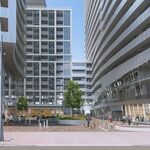I think the physical configuration of the roadway is much less important than travel patterns when it comes to numbering and that interregional travel patterns are more important than local travel patterns as it is more likely that people from outside of the local area will be relying on signage to find their way.
In my judgement, most traffic by far on local expressways is following the 85<->7<->8 routing from Waterloo to the 401 and vice versa. The next most important routing would be 7<->85, and then finally 7<->8. It is absurd that the most important route into the city, the route that visitors will take if they are coming in to visit any of the major local employers or destinations (universities, St. Jacob's market, Perimeter Institute, Blackberry, etc.), requires using three different highway numbers. For that reason, I think it makes sense to number the Freeport Bypass and the part of the Conestoga Pkwy heading north from there a single number. Most visitors to the region use this path, as well as most commuters within the region.
Highway 7 is an important EW provincial route, and for that reason, I think that numbering should be preserved along that routing. I think the Highway 8 is actually less important, and should end in Stratford where it meets 7. This would eliminate Hwy 8 in KW and simplifying numbering on the highways there so that there is only one number except between the Freeport Bypass and Victoria St. (/the future Hwy 7 bypass) where there would be two highway numbers cosigned.
The actual physical configuration of the highways is more an accident of history than anything. Kitchener started work on the Conestoga Parkway before the route of the 401 was determined through the region. They had initially hoped the 401 would follow the E-W portion of the Pkwy through the city, but Cambridge fought to have it pass through there instead. The present alignment of the 401 is a compromise between the two that significantly alters the traffic patterns away from what the Conestoga Pkwy was initially designed to address.




